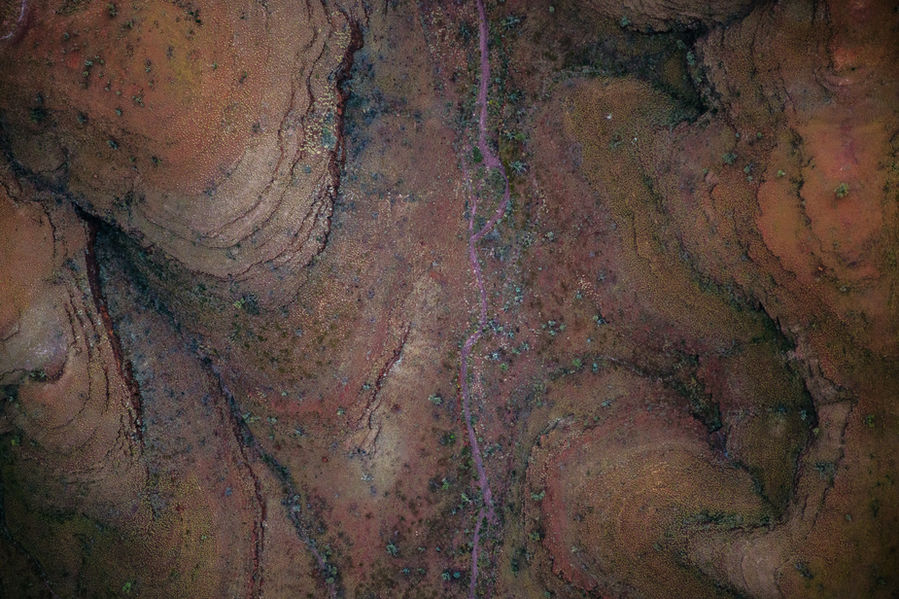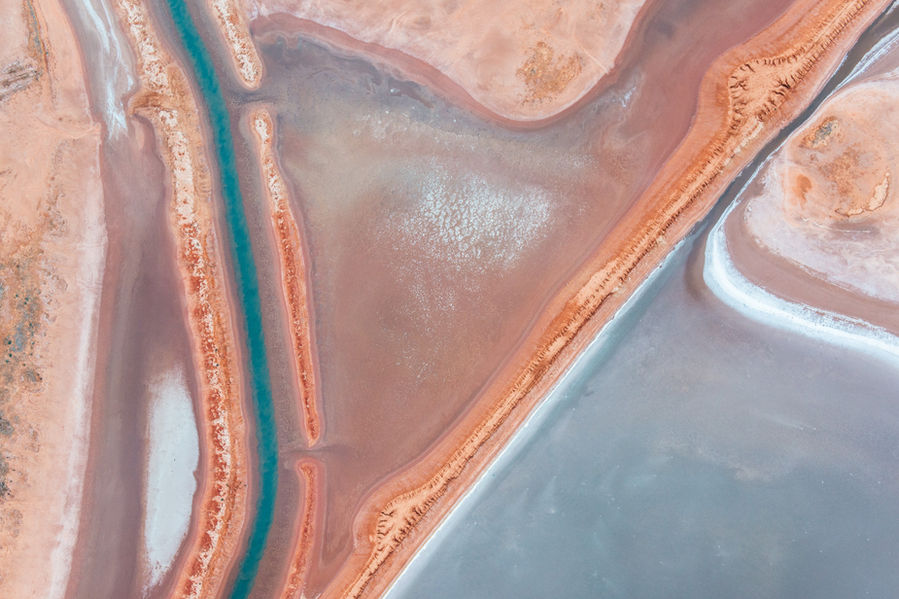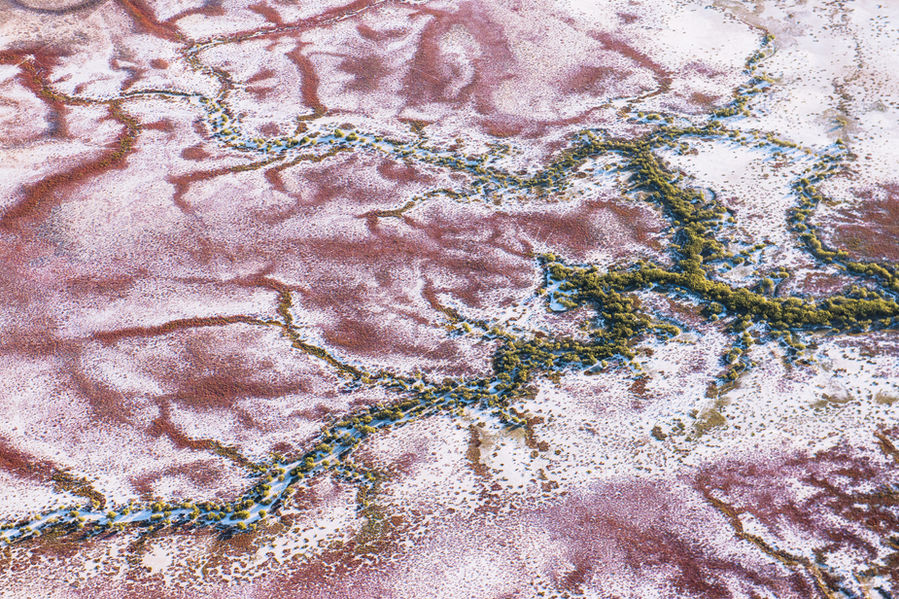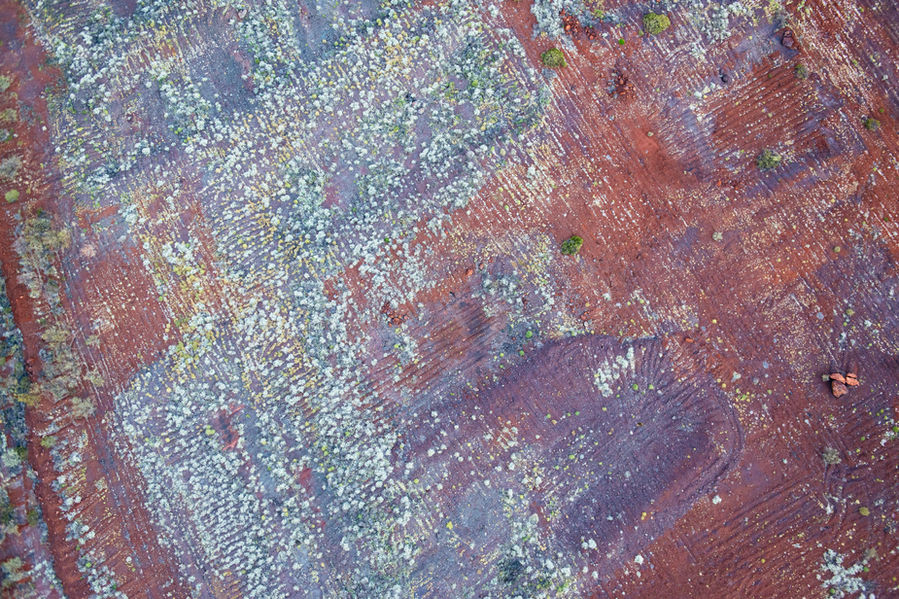
Floating Fish
Floating Fish is the floating part of my PhD work which focused on the relationship between the modern aesthetics of the Sublime and sense of place, with the fieldwork component based in the sublime landscapes of the Pilbara.
The Pilbara is the North West region of Western Australia, it is said to either mean dry (bilybara, meaning 'dry' in the Nyamal and Banyjima languages) or fish (pilbarra, an Aboriginal word for the mullet or fish). Dry Land - Floating Fish, is an attempt at portraying the region with its multifaceted appearances and 'personalities' while also leaving space for renewed interpretations of the same photographs, of the same place. It hopes to capture the Pilabra's genus loci (spirit of place) while leaving room for us to forever re-define what the Pilbara is about and take responsibility for how it exists.
Indeed, places are dynamic entities product of the relations between objects and subjects whose very existence depends on their relationship with their environment. In other words: I am who I am in part because of where I am, and where I am is in part what it is, because I am there.
It is my belief that to capture place, the 'aesthetic and formal' approach to place is just as important as the 'objective recording' of place. Place cannot be captured by the mechanical recording of light or by systematic descriptions alone; the stories, lived experience and events all participate to making place what it is. Further, there can never be a definite capture of place, place is dynamic, its representations must leave space for the imagination of place which continually shapes place.
Photography has the capacity to produce visuals which do not sit in either fiction or actuality. Dry Land - Floating Fish emphasises this rich ambiguity. It adopts a deadpan matter of fact approach which is nevertheless preoccupied with form and highly stylised. The photographs function both rather well as objective and subjective visual statements of what was there. They also therefore provide a good basis for either systematic analysis or exegetical work.
I have had geologists explain to me the details of mining Iron Ore while looking at my photographs, while I have also had people refusing to believe that they were photographs or even telling me how it reminded them of their theoretical physics study of black holes. In other words, the photographs depict but they hope to allow and incite for interpretational leeway, they hope to turn recorded matters of fact into matters of concern that always remain to be defined and interpreted (see Latour 2004). I wish for these photographs to be canvases for old and new stories to be told, and for lines, topographical and otherwise, to be drawn figuratively or literally. The photographs aren't a blank canvases, what is there is there, but how it exists always remains to be determined.
For the academic abstract see below.
Latour, Bruno, 2004, Why has critique run out of steam? From matters of fact to matters of concern, Critical Inquiry, 30 (2), 225-248.
Dry Land / Floating Fish 2013-2017
Gwenael Velge
PhD thesis abstract:
Placing the Sublime: Landscape Photography in the Anthropocene
This creative arts thesis and exegesis attempts to re-think the classic aesthetic category of the Sublime by exploring it from the perspective of place – a human geography concept concisely expressing the entanglement of matter and meaning.
The creative component of the research is the result of fieldwork undertaken in the classically sublime landscapes of the Australian Outback (Pilbara region), blending terrestrial and aerial landscape photography, both figurative and abstract, in an attempt to level the reality and importance of form and content, and collapse – or transcend – the standard dichotomy between objective analytics and subjective hermeneutics. A relational and ‘emplaced’ approach to landscape – sublime and not – has much to contribute to the fields of aesthetics and landscape photography.
The thesis proceeds through three ‘placements’ of the Sublime – conceptual, contextual and visual – that mobilise theoretical literature, empirical analysis and exegesis of my own and other artists’ creative work.
This thesis departs from the traditions of the Kantian Sublime, Modern and Post-Modern aesthetics, and argues for a process-relational re-interpretation of Schopenhauer’s Sublime and Will-less subject: an onto-ethico-epistemology that consists in transcending not phenomena but one’s sense of individual self in order to experience how we exist relationally – in place.
The conceptual re-working of the Sublime and the photograph, as well as the creative component, attempt to demonstrate that a relational subject perceiving the relational nature of objects provides a fresh view on landscape and the photograph. A re-definition of the Sublime is not only possible, but also required, given the perceived epistemological crisis brought about by Post-Modernism and the ecological crossroads we face, now that humanity is largely recognised to impact geological time.
























